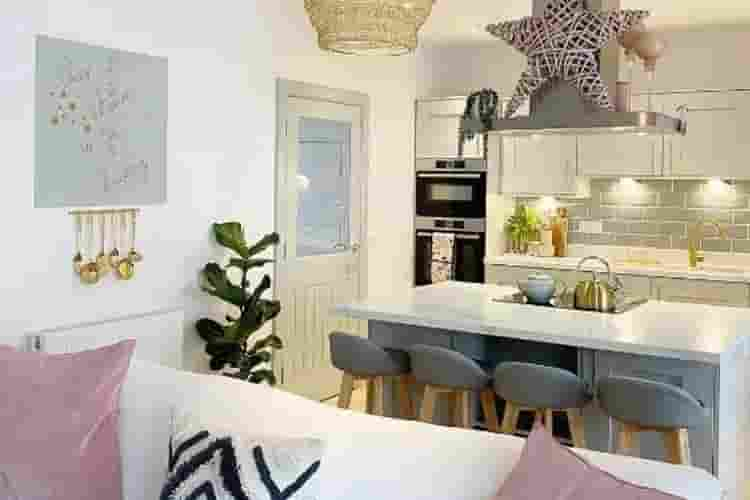
Bar stools and counter stools are two common options for seating on raised surfaces like kitchen countertops or breakfast bars. While there are some similarities between these two styles of stools, there are also clear differences between them that make it a difficult choice. Making an informed choice requires having a thorough understanding of the qualities and features of both bar stools and counter stools.
That’s why, in this post, we’re putting them head to head and comparing bar stools vs counter stools to help you pick the right one for your breakfast bar!
Bar stools and counter stools at Lakeland Furniture
We stock a large range of counter-height bar stools and breakfast bar stools here at Lakeland Furniture, ensuring our customers have plenty of choices when it comes to both. If you’re in the market for a new set of stools, please feel free to browse our collection to find the perfect stool for you.
What’s the difference between counter stools and bar stools?
The most important differences between bar stools and counter stools are their height and intended function. With a reduced height and generally a more narrow design, counter stools are made for typical kitchen countertops or islands. The height of bar stools, on the other hand, makes them a perfect fit for raised bar areas as you can be seated higher than at a traditional countertop.
Bar stools
Bar stools are generally used for breakfast bars or other raised bars in the home. Below, we’ll discuss some of the most important bar stool features:
Height
With an average height of around 42 inches, bar stools are often higher than counter stools. Users can more easily reach a bar counter or high-top table because of the added height, allowing them to sit at higher breakfast bars comfortably. That being said, many bar stools have an adjustable height, making them suited to a broader range of surfaces and much more dynamic.
Design and Features
The design of bar chairs frequently includes elements that improve their usability in bar areas. For maximum legroom and support, they might include a higher frame, longer legs, and an elevated footrest. Additionally, a lot of bar stools include swivel features that make it easier for people to turn around to talk to people next to them, or even behind them.
Backrests and Armrests
Bar stools are available in a variety of styles; some have backrests and armrests, while others are backless. When sitting for extended periods of time, backrests offer more support and comfort, but backless designs can have a clean, minimalist appearance and are easier to fit into smaller spaces.
Materials and Upholstery
A broad variety of materials, including wood, metal, and plastic, can be used to manufacture bar stools. The stool's strength, and aesthetic appeal, as well as how easy they are to clean/maintain are influenced by the material selection. Bar stools frequently have upholstered seats for additional comfort, with choices including fabric, leather, or velvet. In our post on bar stool materials, we dive deeper into this topic.
Style and Aesthetics
Bar stools are available in a wide range of designs, from conventional to contemporary, allowing you to choose one that works well with your bar or entertainment area. There are bar stools to fit any aesthetic style, whether you want a rustic, industrial, or sleek modern appearance, each with a range of different features to choose from.
Counter stools
Counter stools are built specifically for use at countertops or kitchen islands and come in a wide variety of different styles and with different features to choose from. Below are some of the most important things to consider when it comes to counter-height stools:
Height
Counter stools are made to be suitable for use with regular kitchen countertops, which are usually 36 inches high. For informal meals or dining in the kitchen, this height offers a comfortable seating position for most countertops.
Design and Profile
Compared to bar stools, counter stools tend to have fewer features and generally take up less room than bar stools. They are made to blend in effortlessly with dining room or kitchen décor, providing a unified appearance and allowing for multiple stools to be placed at the kitchen counter.
Practicality and utility
Counter stools place a premium on practicality and usefulness, providing dynamic seating that can be used at pretty much any kitchen counter. They retain a laid-back and informal ambiance while providing family members and visitors with a handy sitting alternative.
Backrests and Armrests
Counter stools come in a variety of styles, with or without backrests and armrests. Stools with backrests provide additional support and comfort, particularly while sitting for longer periods of time. Backless stools contribute to a minimalist appearance and simple mobility. Armrests are typically less common in counter stools given the fact that this would result in them taking up more space, but there are some models that come with armrests too.
Materials and Upholstery
Counter stools come in just as many different kinds of materials as bar stools do. Wood, metal, and plastic are often used materials, but there are plenty of others that can be used too. With various upholstery options including leather, faux leather, velvet, and fabric, upholstered seats may add an added degree of comfort and are therefore a common choice.
The similarities
Despite their differences, bar stools and counter stools have many things in common. Next, we’ll detail a number of the most important things they have in common and compare them.
Look
One of the most important similarities is the way they look. Both bar stools and counter stools are stools that have a very similar look and can be made in almost identical styles, which is the main reason why people have trouble telling them apart.
Use
Both counter stools and bar stools are used in kitchen and dining areas for providing seating at countertops or raised bar areas. Since it’s common for them to be adjustable in height too, they can sometimes be used interchangeably if the surface height allows for it.
Styles and materials
Both bar stools and counter stools are available in a variety of designs, materials, and styles, making them versatile in terms of complementing different interior aesthetics. They come in a variety of designs, from conventional to contemporary, and often use materials like wood, metal, and upholstered seats made with fabric, leather, and velvet.
The differences between bar stools and counter stools
Although they look almost identical, there are a number of important differences between counter stools and bar stools. We’ll get into what these differences are next.
Height
The height of bar stools and counter stools is the key distinction between them and it’s the main reason why one stool is classed as a bar stool and another as a counter stool. To fit bar-height countertops or high-top tables, bar stools are often higher, with an average height of around 42 inches. Contrarily, counter stools are made to be the same height as ordinary kitchen countertops, which are usually 36 inches high.
Design
Bar stools frequently have higher frames, longer legs, and raised footrests as design elements because they offer the best legroom and support for elevated seating. Additionally, a lot of bar stools include swivel features that make it easier for people to turn around and converse with others. Adjustable height stools are another feature commonly seen on bar stools, to allow them to be used on a wider range of bar heights and improve their usability. While still fashionable, counter stools often have a lower profile and simpler patterns to match the decor of the kitchen or dining room and generally come with fewer features.
Backrests and Armrests
There are a variety of backrest and armrest options for bar stools, as well as backless versions for a more minimalist appearance. Counter stools are also available with a backrest and without one, however they frequently place more emphasis on usefulness and practicality than intricate aesthetic elements. It is uncommon for a counter stool to have footrests or armrests in the same way that bar stools do.
The best bar stools and counter stools
We stock a very large range of both bar stools and counter stools, making it virtually impossible for us to list all of them in this post. That being said, below, we’ll cover four of our best-selling bar stools and counter stools.
Hamilton Dark Grey Faux Leather
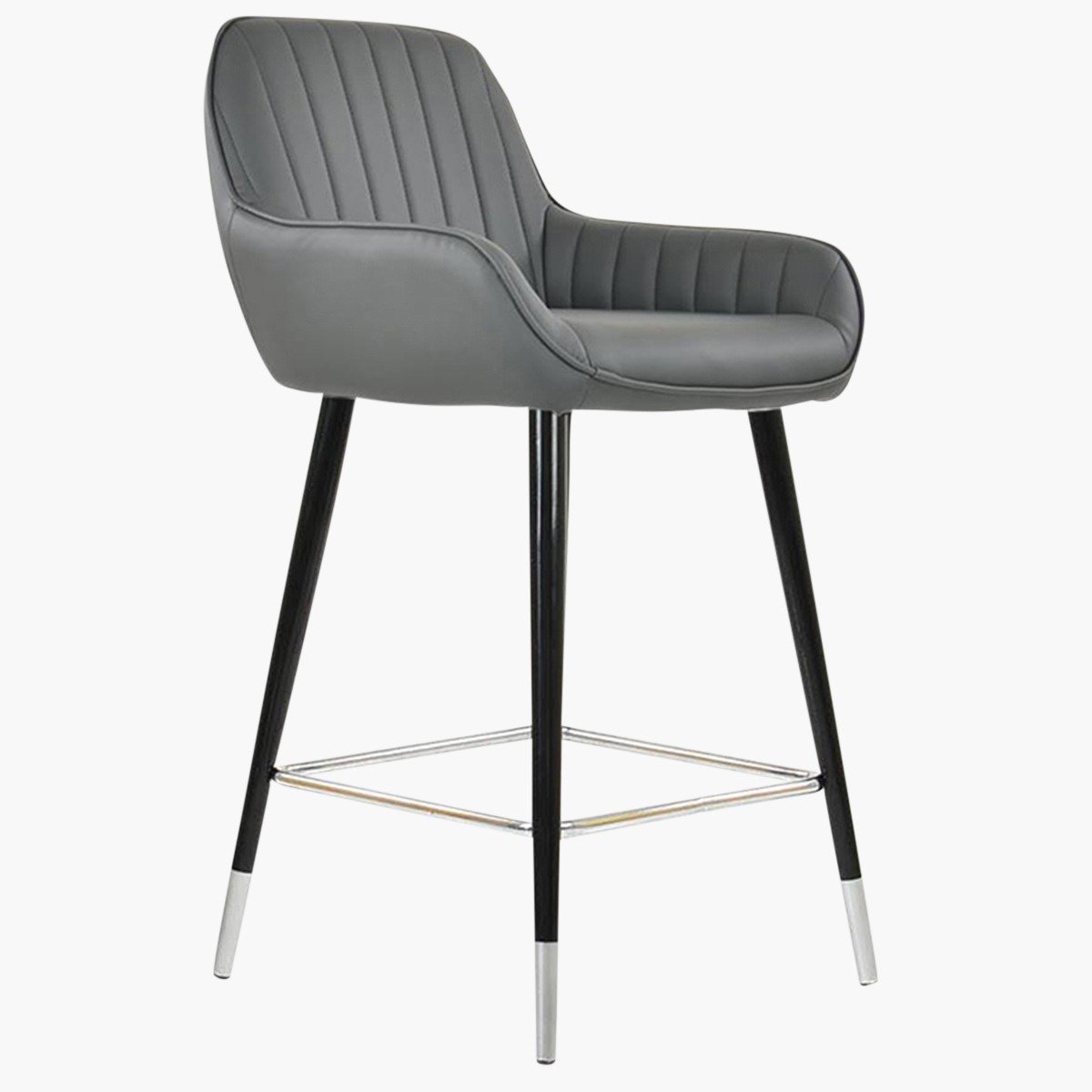
Our Hamilton bar stool range is one of the most popular ranges we do, and the dark grey variety in faux leather might just be the most popular of them all. The material makes it easy to keep clean and also low maintenance and the stool itself has a sleek, elegant look that fits perfectly into most modern bar areas. This bar stool has a seat height of 68cm, a total height of 103cm, and a 35cm high internal backrest.
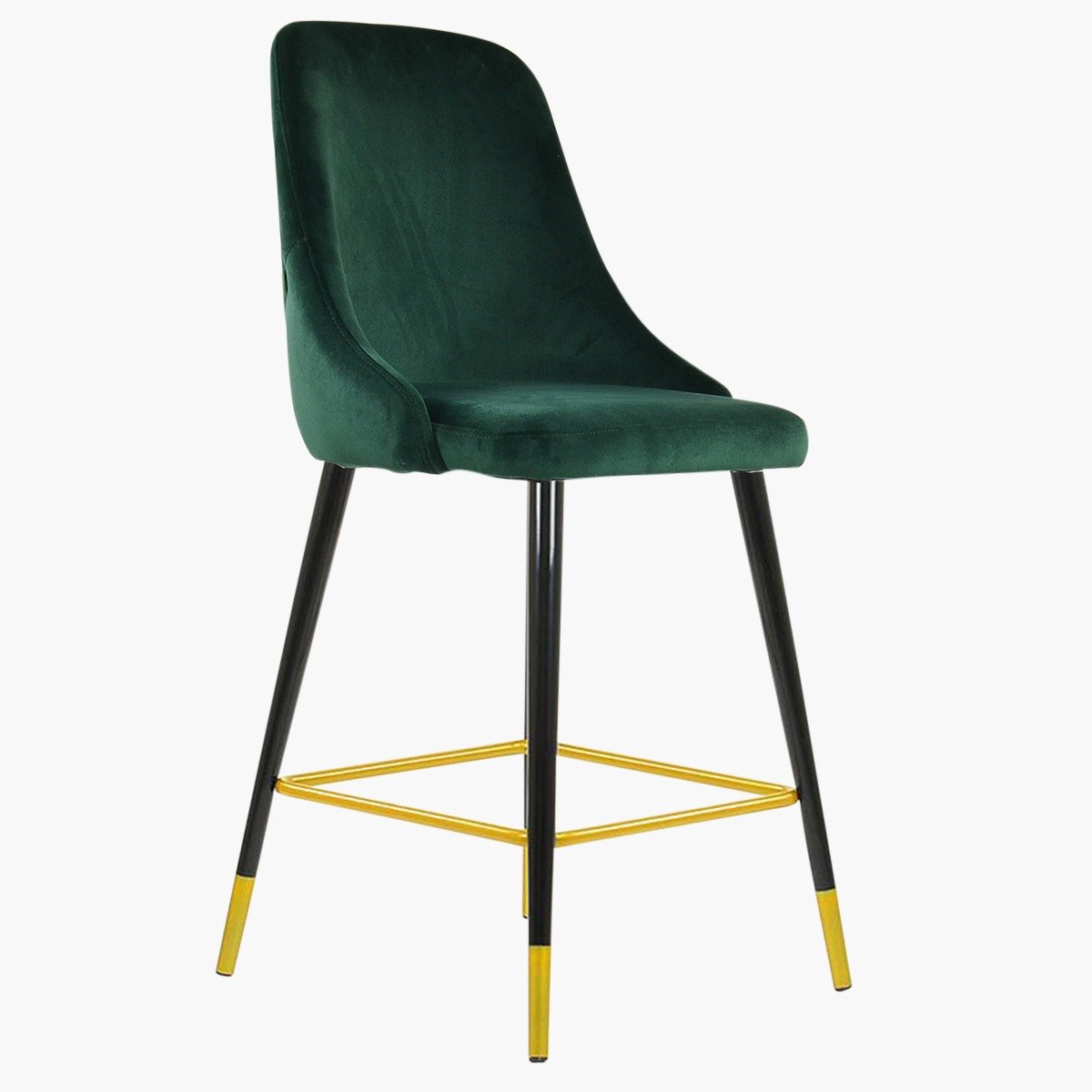
The Colorado Green Velvet counter-height stool with black and gold legs is one of the more luxurious models of counter stools we offer. The checkered pattern on the back of the stool and the green padded velvet upholstery look fantastic in a range of different style interiors.
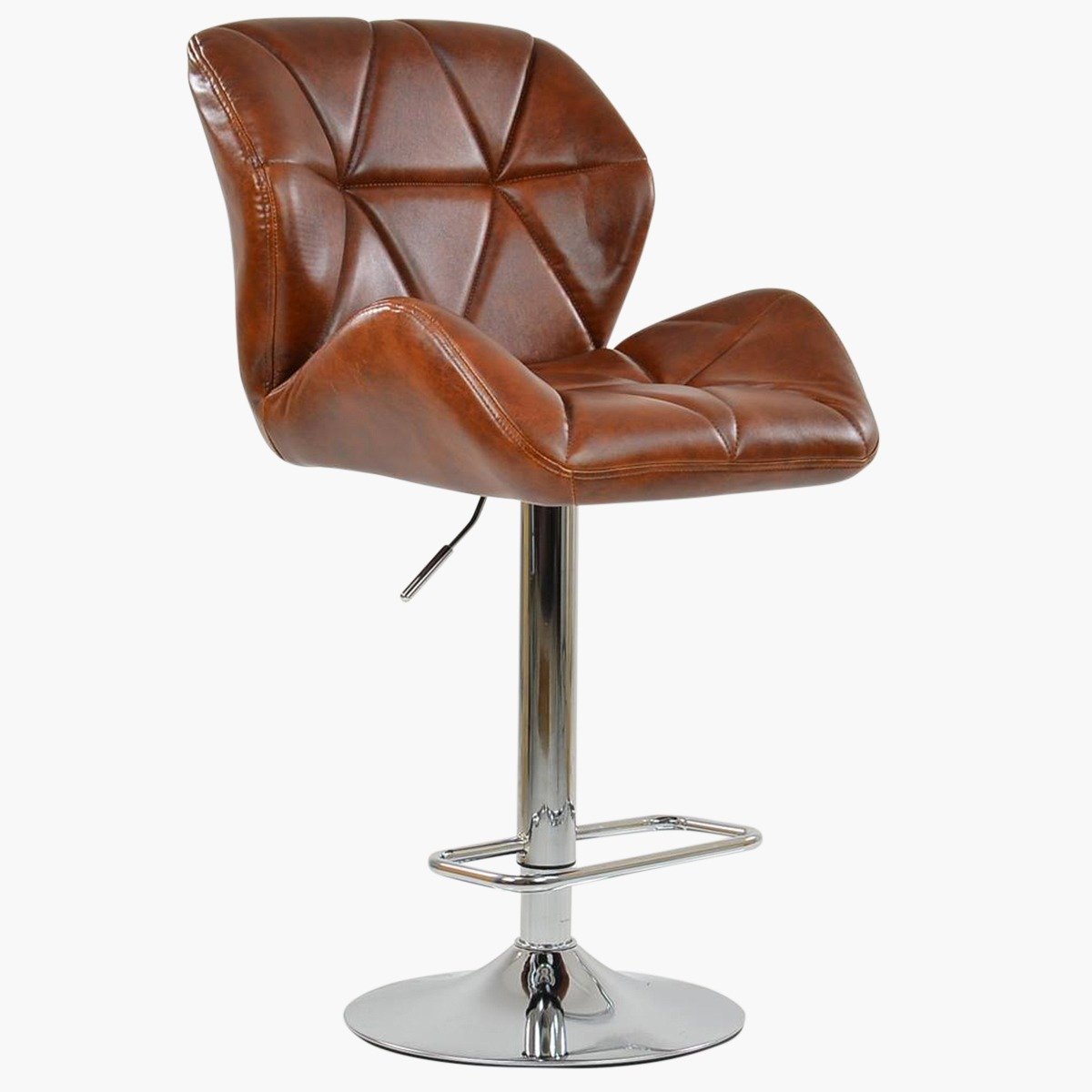
Our brown Iris Bar Stool is one of the most comfortable bar stools we offer, with a high backrest and thick, padded seat. The dark brown leather is perfect for both classical and modern styles and it comes with a footrest and is adjustable in height. It has a total height of 116cm and a seat depth of 55cm.
Athena Grey Fabric Breakfast Stool
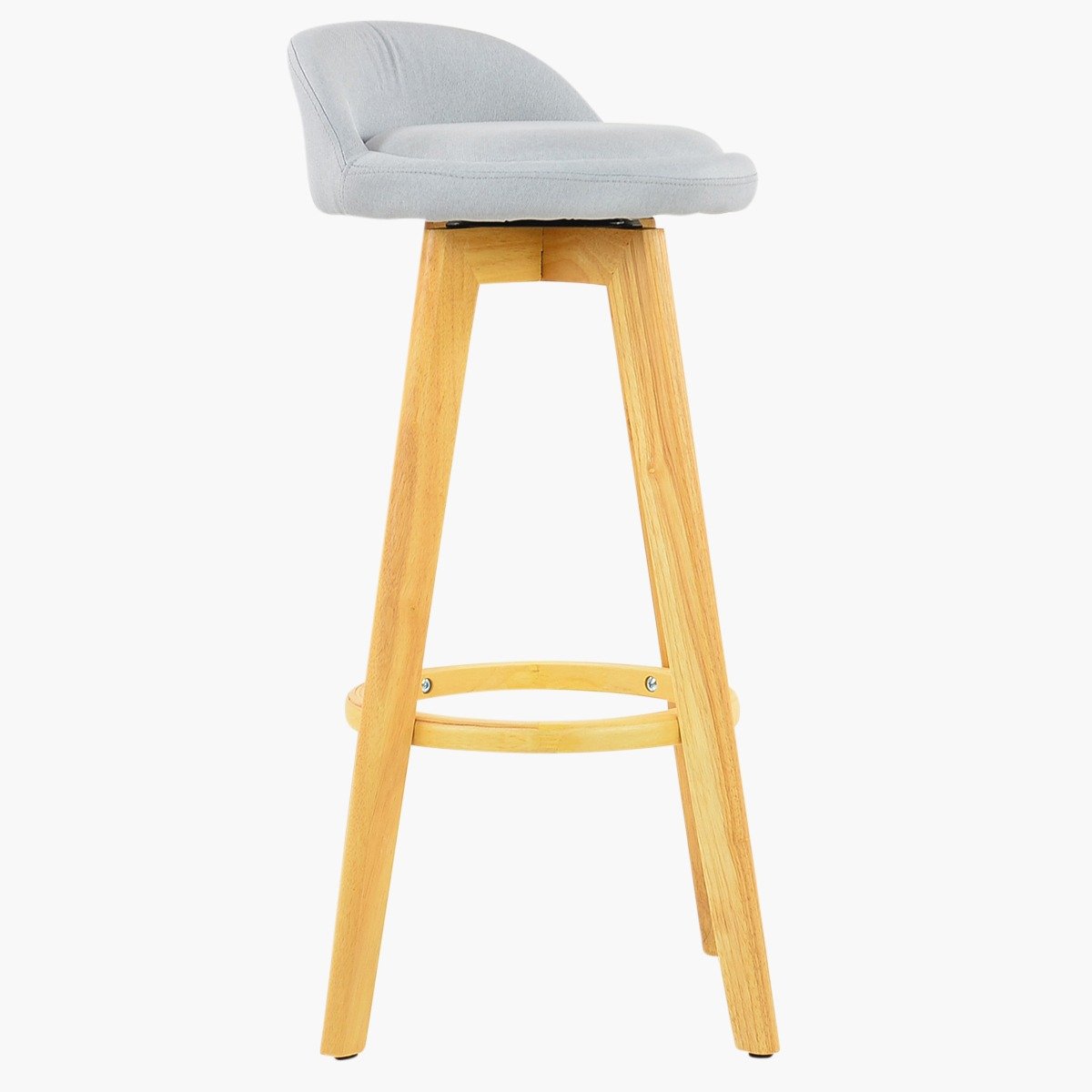
The Athena Breakfast Stool in grey fabric is another one of those counter stools we just couldn’t leave off this list. Its simple style and natural design make it perfectly suited to modern, Scandi, and farmhouse styles, but also a good option for coastal styles too. It comes with a swivel stool and a wooden frame with a fixed height.
What height should bar stools and counter stools be?
The height of your counter or bar will determine the appropriate height for counter stools and bar stools. That being said, counter stools are typically made to fit around 36-inch-high conventional kitchen countertops. In contrast, bar stools are higher to complement high-top or bar-height tables, which are typically 42 inches high. It's crucial to pick stools with heights that allow you adequate legroom and comfortable seating, so adjustable height stools may offer a solution for bar heights that are different from the norm.
Can I use bar stools at the counter in my kitchen?
Bar stools may be used for a kitchen counter, however, they might not be the most comfortable seating option. Bar stools are often taller than what is needed for a kitchen counter since they are made for higher bar countertops or high-top tables. Less legroom and an uncomfortable seating position could come from using bar stools for a kitchen counter. To guarantee maximum comfort and functionality, it is typically advised to utilize counter stools made expressly for kitchen countertops or to opt for an adjustable-height bar stool.
Are counter stools and bar stools interchangeable terms?
Counter stools and bar stools are used interchangeably, but they do refer to two different types of stool. Their heights are the primary distinction between the two. Counter stools are made for ordinary kitchen countertops, whereas bar stools are higher to fit bar-height counters or high-top tables. Bar stools also frequently have higher frames, longer legs, and elevated footrests, whereas counter stools focus on convenience and practicality with lower profiles that easily match the style of a kitchen or dining area.
How much do bar chairs and counter stools cost?
Counter stools and bar stools can range greatly in price based on elements like materials, level of design intricacy, brand repute, and customisation possibilities. Generally speaking, the price of a counter stool can range from £50 to £300 or more per stool, depending on the quality of the materials and the characteristics of the design. Similar price ranges apply to bar stools, which are significantly higher and may have extra features like swivel mechanisms. Prices for bar stools normally start at approximately £80 and can go up to several hundred pounds per stool. Higher price points may be associated with premium brands and customization possibilities.
Comparing bar stools and counter stools, you quickly notice the differences and similarities between them. Where bar stools are used for breakfast bars, counter stools are used for kitchen counters and often have fewer features than bar stools. Hopefully, after reading this post, you now have a better understanding of the differences and similarities between bar stools and counter stools.
If you have any questions about the bar stools or counter stools we offer, or you have any questions about this post, please feel free to reach out to us. Our customer care team is always happy to help!
 Chat with us on WhatsApp
Chat with us on WhatsApp


Comments